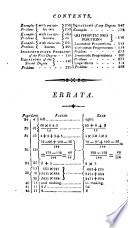 | L. I. M. Chevigné - Mathematics - 1807 - 294 pages
...the dividend, with the attention of changing their signs ; we obtained a first remainder ; we divided the first term of this remainder by the first term of the divisor, which gave Zab in the quotient; we then multiplied the divisor by this new partial quotient; then,... | |
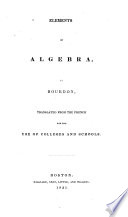 | Bourdon (M., Louis Pierre Marie) - Algebra - 1831 - 326 pages
...quotient is found ; multiply the divisor by this term, and subtract the product from the dividend. Divide the first term of this remainder by the first term of the divisor, and the second term of the quotient is found ; multiply the divisor by this second term, and subtract the... | |
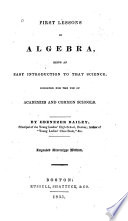 | Ebenezer Bailey - Algebra - 1835 - 258 pages
...the dividend, and the remainder is 2 bc -\- 2 cc, which must also be divided. We begin as before, and divide the first term of this remainder by the first term of the divisor ; that is, — - = 2 c, which is the B second term of the quotient. We next multiply the divisor, b... | |
 | Edward Olney - Algebra - 1874 - 228 pages
...to this part. Thus I know that the next highest power of a in the quotient will result from dividing the first term of this remainder by the first term of the divisor, etc. When this process has terminated I have taken af , and — 2ax, and x*, times the divisor out... | |
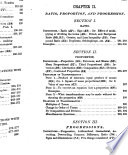 | Edward Olney - Algebra - 1877 - 466 pages
...to this part. Thus I know that the next highest power of a in the quotient will result from dividing the first term of this remainder by the first term of the divisor, etc., etc. When this process has terminated I have taken a8, and — 2ax, and a;* times the divisor... | |
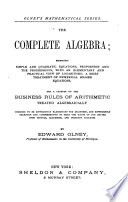 | Edward Olney - Algebra - 1878 - 516 pages
...to this part. Thus I know that the next highest power of o in the quotient will result from dividing the first term of this remainder by the first term of the divisor, etc., etc. When this process has terminated I have taken a8, and — 2ox, and x1 times the divisor... | |
 | Edward Olney - Algebra - 1881 - 504 pages
...to this part. Thus I know that the next highest power of a in the quotient will result from dividing the first term of this remainder by the first term of the divisor, etc. When this process has terminated I have taken a2, and — 2ax, and ж2 times the divisor out of... | |
 | Edward Olney - Algebra - 1881 - 254 pages
...to this part. Thus I know that the next highest power of a in the quotient will result from dividing the first term of this remainder by the first term of the divisor, etc. When this process has terminated I have taken a' ! , and —2o-r, and x", times the divisor out... | |
 | Herbert Edwin Hawkes - Algebra - 1905 - 314 pages
...Multiply the divisor by this first term of the quotient and subtract the product from the dividend. Divide the first term of this remainder by the first term of the divisor for the second term of the quotient, and proceed as before until the remainder vanishes or is of lower... | |
 | Herbert Ellsworth Slaught, Nels Johann Lennes - Algebra - 1907 - 328 pages
...Multiply the first term of the quotient by the divisor and subtract the product from the dividend. 4. Divide the first term of this remainder by the first term of the divisor, obtaining the second term of the quotient. Multiply the divisor by the second term of the quotient... | |
| |